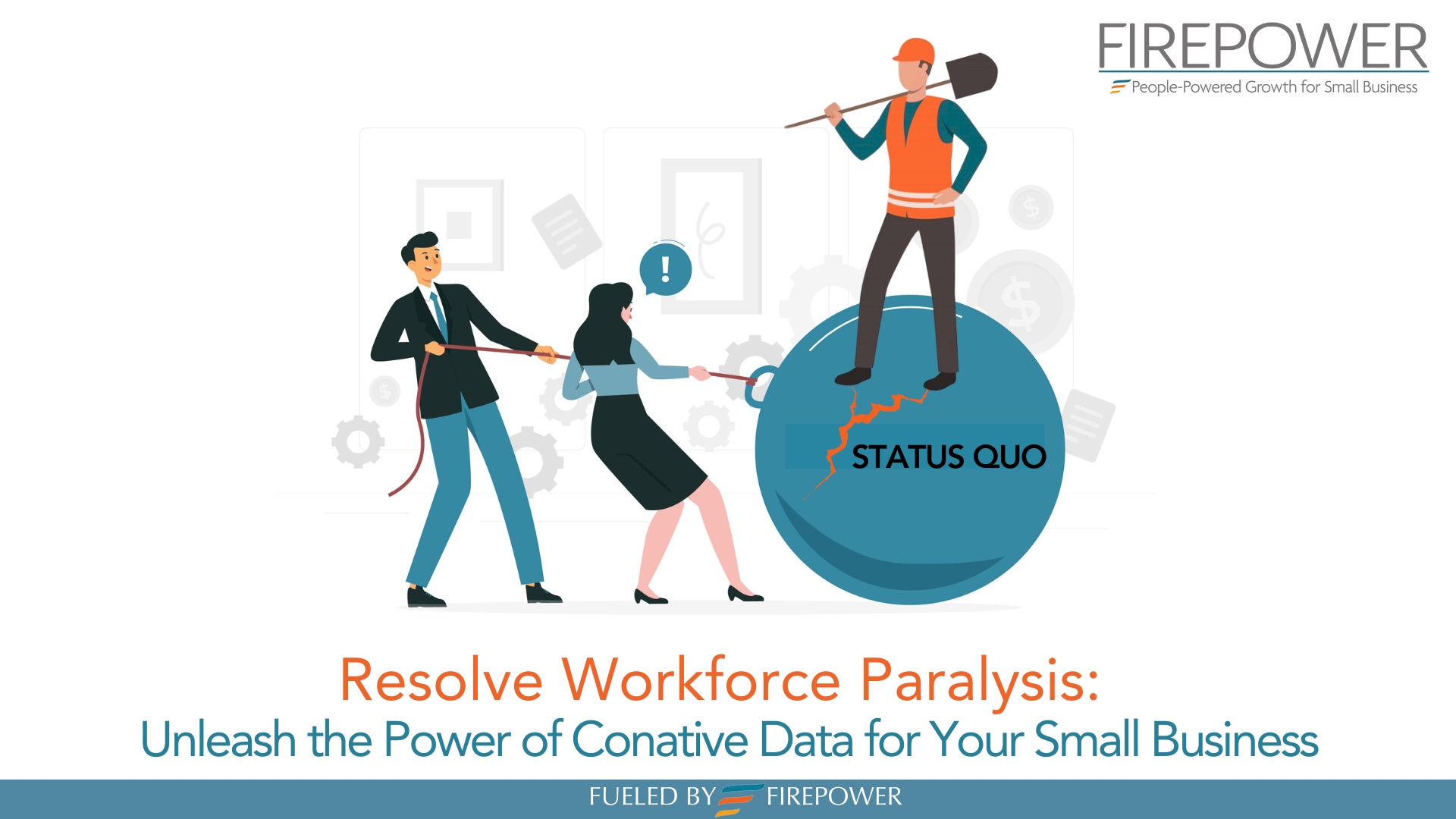It’s Possible
By Maria Forbes
October 11, 2022
All professionals deal with some form of personal adversity at work. Change is constant as you grow and scale your company and today, we are considering the impact of a slowing economy. Recent data in an HBR article, shows layoffs up 39% in the second quarter of 2022, (bringing the year’s total to more than 133,000), rising inflation has increased prices at supermarkets and gas stations, combined with an increasingly polarizing political landscape and troubling global events, all making for a perfect atmosphere for draining employee motivation. Small business teams are experiencing more stress which challenges their motivation, and business resiliency is weakening. What can we do as we prepare for a New Year?
Make resilience and motivation possible
in what seems like impossible times.
As small business leaders face economic challenges, resilience is an essential strength. Is your team showing signs of lost motivation? Are they unable to bounce back from adversities such as layoffs, budget cuts, or role changes? Have your attempts to improve employee motivation been ineffective?
To determine your best defense against a demotivated workforce, let’s consider how resilience and motivation impact on your business. As you consider how you can help your employees become more resilient and motivated, consider whether one (or both) of these pitfalls might be standing in your way, and theirs.
Resilience is not a personality trait.
Resilience is a leader-driven part of your small business model. It is not an individual trait, it is a team trait, that keeps your team’s collective spirits high in the face of challenge. While each individual role is influential, the well-aligned collective strengths of your workforce is the resilient force to navigate change. Your employees must be supported by leadership and prepared to forge ahead in all economic conditions. Keeping teams motivated is a retention strategy intended to maintain strong business contributors that can be united to navigate change. The early work on making personal growth visible to everyone at your company will avoid burnout and prevent motivational lags. Consider this a top priority in the New Year, to support your people and power your collective resilience.
Motivation is developed through the acknowledgement of, and the
freedom to act on individual and collective strengths.
We can’t mentally and/or physically motivate others but we can create conditions that will encourage motivation. Individual conditions include a leadership dynamic that seeks to understand personal job satisfaction and plans for actionable feedback on development and performance throughout a working relationship. Individual conditions that motivate offer opportunities to grow within the context of a role and beyond.
Collective conditions include opportunities to challenge the team. The opportunities not only consider the realm of possibilities within departmental capabilities, they should also include collective work that will meet strategic company goals. Your growth goals should not be yours alone, create business conditions that encourage teams to engage their individual and collective strengths in your long-term success.
The following considerations will help your employees to rediscover their personal motivation and resiliency. Keep in mind: There’s no one-size-fits-all approach to this and it’s important that you start with an accurate assessment of your workforce.
Your team may be struggling with different feelings and challenges. Small business leaders need to realize that all employees are not feeling exactly the same about a given challenge. Your role is to find out how tough times are affecting employees, get to the root of how changes are impacting their role and their motivation, and help them to rediscover it. Here are some ways to begin.
Don’t sugarcoat: It’s natural to want to soften the blow when you know decisions will likely elicit painful reactions. But that usually causes more pain. Offering false reassurances that things will be okay or pointing out the bright side invalidates the grief and fear people may be feeling. Allowing people to show their emotions legitimizes and honors their experience. Even if people express emotions you don’t share, listen with empathy and resist saying anything that risks minimizing what they’re expressing.
Don’t defend yourself: Having to make hard decisions is part of your role as a leader. When people express understandable disappointment or resentment about difficult news, you must take it graciously. That doesn’t mean you have to tolerate hostile disrespect or offensive behavior, but you do have to bear the brunt. Defending your decision feels dismissive of their emotions. Never play the victim with statements like, “You have no idea how hard this was.” This will lead people to withdraw trust and become even more demotivated.
Deal with survivor guilt after layoffs: If you’ve had to lay people off, those that remain may well be dealing with survivor guilt. Others may feel a sense of envy of those who got to leave. Allow people to feel their wide range of emotions safely and honestly. Your employees may try to hide their emotions from you, in positive pretense, to avoid “being next.” Communicate consistently and transparently so others can be honest about how they’re feeling.
When possible, invite your team into hard decisions: If you’re facing cost cuts or severe economic headwinds, let your team into the conversation. Where appropriate, engage them in identifying ways to make the hard decisions, they will often find creative ways to save jobs while hitting cost targets — surfacing opportunities that are clear from their perspective.
Help struggling employees reprioritize work: HBR states, in a recent article, that many leaders become exasperated trying to figure out meaningful ways to let their teams know they genuinely care. One of the greatest signs of care you can show is helping team members reprioritize work when capacity has been cut. The “do more with less” paradigm is one of the many drivers behind millions quitting their jobs due to burnout. Help your team members figure out what is no longer required and allow them to make informed recommendations on work to pause and work to eliminate.
Stay available: Your own feelings about having to make tough calls may lead you to instinctively withdraw from your team. Don’t make assumptions about their feelings, don’t assume they blame you or now see you as the enemy. Check in regularly, ask how they’re doing and how you might be supportive. Be persistent and let them know you’re available to talk, listen, and share your perspective, if and when they would like.
Show appreciation for sacrifice and perseverance: Let your employees know that you understand the strain of tough conditions and that you appreciate their resiliency. Be specific about the positive impact of their efforts on the team’s performance, and when appropriate, make the appreciation public. Taking the time to acknowledge when your team has gone the extra mile is especially important when managing change.
In summary, managing yourself during tough times is probably the most important thing you can do. Any hint of hypocrisy risks turning your people from demotivated to infuriated. Pay extra attention to motivational cues that indicate how your employees are faring through challenging times. Demonstrate resilience and cultivate motivation. As you look ahead to the future of your business, think about how you might prepare for a changing business landscape and consider how you will practice resilience before you are in it. All roles in your company are susceptible to stressors, the reason resilience should be practiced across your entire workforce. When your employees are informed and armed with support during tough times, they are empowered to control personal reactions and collective actions to challenging experiences. It is important to recognize the power and influence of leadership in shaping employee resilience. Best practices are effective and sustainable when the responsibility of resilience is shared. Don’t wait, there are always challenges ahead.





